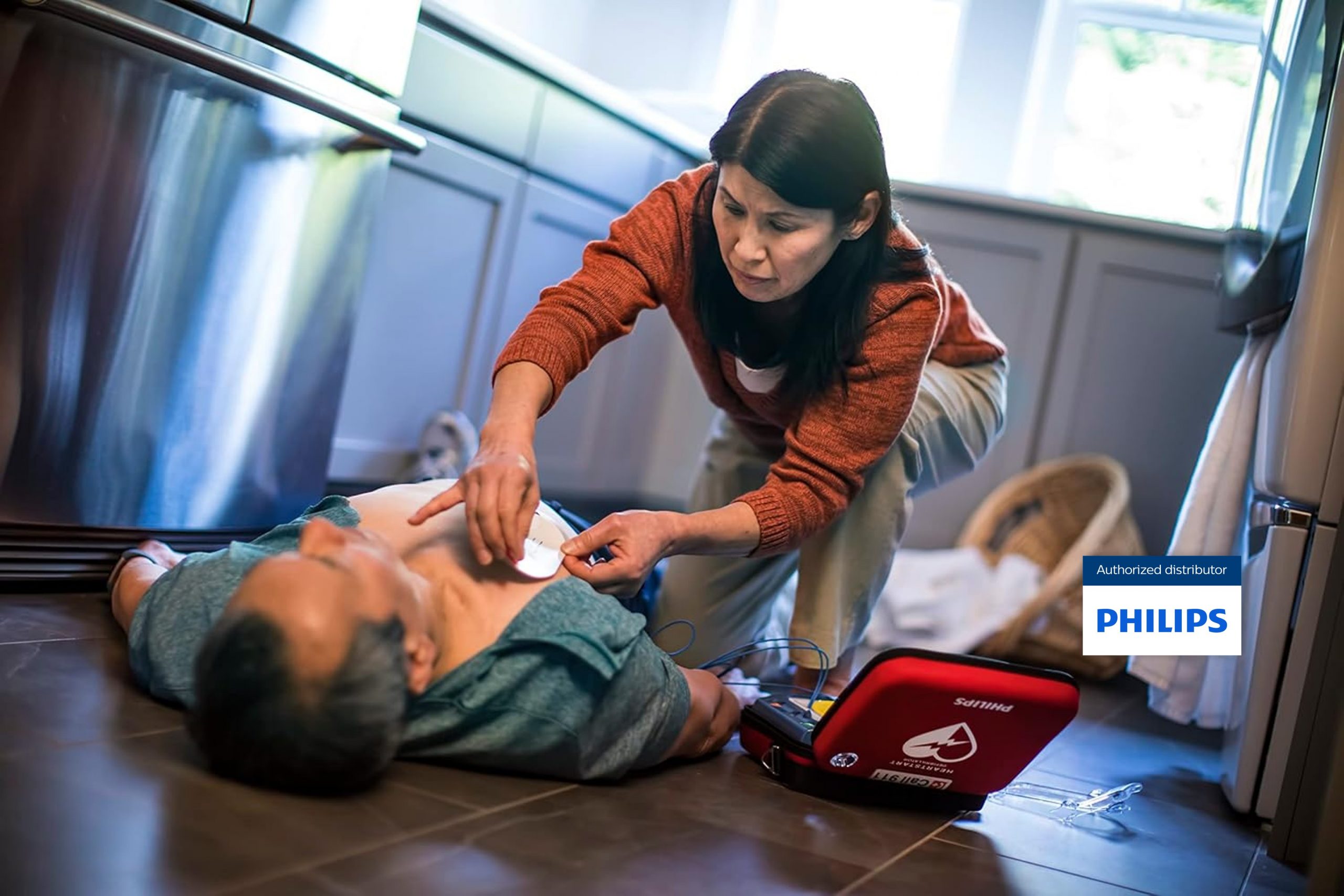Saving Lives: Philips Quick Shock Technology

- Dr. Yu et al. demonstrated that longer interruptions in chest compressions before shocks correlate with poorer CPR outcomes and increased myocardial (heart muscle) dysfunction post-resuscitation.
- Dr. Eftestol and colleagues also emphasized that the interval between stopping chest compressions and shock delivery should be kept as short as possible to maximize survival chances.
- SMART Biphasic Technology, which customizes shock waveforms based on patient impedance to maximize efficacy while minimizing tissue damage.
- SMART Analysis, which automatically determines if a shock is needed, ensuring safety by delivering shocks only when necessary.
- Comprehensive voice prompts and CPR coaching to guide rescuers through every step during an emergency.
- Philips Quick Shock Brochure (PDF)
- Quick Shock – Philips official PDF
- Philips HeartStart FRx AED technical specifications and Quick Shock info
- Philips innovation and marketing strategy overview
- Marketing Week coverage of Philips’ brand positioning efforts
Saving Lives: Philips Quick Shock Technology
In emergency cardiac situations, every second counts. Rapid defibrillation after sudden cardiac arrest (SCA) can be the difference between life and death. Philips, a global leader in healthcare technology, has developed an innovative feature called Quick Shock, a breakthrough that significantly reduces the time to deliver a lifesaving shock after CPR.
What is Philips Quick Shock Technology?
Quick Shock is a patented feature available exclusively on Philips HeartStart automated external defibrillators (AEDs), including models like the HeartStart HS1 and FRx. It enables the device to deliver a shock in less than 10 seconds following the end of a CPR pause—with some models delivering shocks in as little as 8 seconds. This is notably faster than competing AEDs, which often take significantly longer to analyze heart rhythms and charge before shock delivery.
How Quick Shock Maximizes CPR Benefits
Cardiopulmonary resuscitation (CPR) is widely recognized as crucial for sustaining life during cardiac arrest by manually maintaining circulation and oxygenation. However, the benefits of CPR rapidly wane once chest compressions are paused. Research shows that interruptions exceeding 15 seconds before delivering a shock can compromise survival outcomes and lead to worse heart function after resuscitation.
Quick Shock technology addresses this challenge by minimizing the time between stopping CPR and administering the shock. The HeartStart AED automatically assesses the victim’s heart rhythm and prepares the device to deliver a shock immediately after CPR pauses, thus reducing interruptions and increasing the chance of returning a normal heartbeat (return of spontaneous circulation).
Evidence Supporting Quick Shock
The effectiveness of Quick Shock is supported by peer-reviewed scientific studies published in the journal Circulation. For example:
These studies validate Philips’ approach to designing AEDs that prioritize rapid shock delivery after CPR.
Quick Shock in Philips AED Products
Philips incorporates Quick Shock into several AED models, with the HeartStart OnSite optimized for the fastest response times. Other HeartStart defibrillators like the FRx model also feature Quick Shock, making them some of the most responsive AEDs on the market. Additional product features include:
Why Quick Shock Matters
The window to save a life during cardiac arrest is incredibly narrow. Studies indicate the chance of survival decreases by approximately 7-10% with each minute that passes without defibrillation. By enabling AED users to deliver shocks faster, Quick Shock reduces the critical downtime between CPR and defibrillation, thereby improving survival rates.
Moreover, this technology is especially valuable in community and workplace settings where users might be laypersons rather than advanced cardiac life support professionals. Philips’ design emphasizes ease of use and rapid responsiveness, helping to bridge the gap in emergency response.
Philips and Its Commitment to Innovation
Philips has long been a pioneer in medical technologies focused on improving patient outcomes through innovation and research. Quick Shock exemplifies this commitment—by integrating user-friendly features with scientifically supported performance enhancements, Philips continues to raise the standard for AED effectiveness.
Beyond defibrillation, Philips invests heavily in healthcare and consumer technologies designed to impact everyday lives, from advanced grooming products to lighting and diagnostic devices.
References and Further Reading:
Through its innovative Quick Shock technology, Philips not only advances AED capability but also contributes to saving more lives by drastically cutting down shock delivery time and enhancing the benefits of CPR. For businesses, schools, and communities seeking the most reliable emergency cardiac response, Philips HeartStart AEDs equipped with Quick Shock stand as a leading choice.
⚕️ IMPORTANT DISCLAIMER
The information contained in this article is provided solely for informational and educational purposes. It does not constitute medical advice, diagnosis, or treatment and should not be used as a substitute for professional medical evaluation. Always consult your doctor or other qualified healthcare professional for any questions or concerns about your health. Do not discontinue, change, or start any treatment without consulting your physician. The information may not be complete or current for your personal situation.
In case of a medical emergency, immediately call emergency services or go to the nearest hospital. This website and its authors assume no responsibility for any harm, loss, or complications that may arise from the use of this information. Each reader is responsible for their own health-related decisions. Individual results may vary, and you should always seek professional medical advice before making health decisions. This content is not intended to replace professional medical consultation. The information provided is based on general medical knowledge and may not apply to specific individual cases.
Read Also
